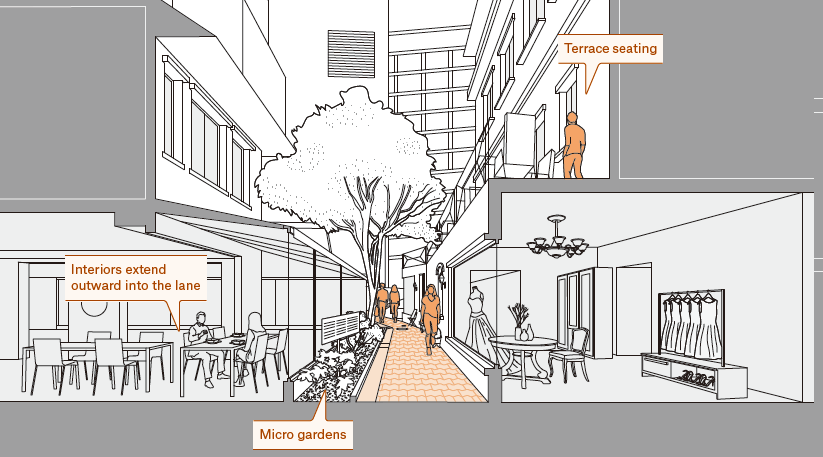Physical Address
304 North Cardinal St.
Dorchester Center, MA 02124
Physical Address
304 North Cardinal St.
Dorchester Center, MA 02124

Arbitrary Lines is the newest must read book on zoning by land use scholar and Market Urbanism contributor, Nolan Gray. The book is split into three sections, starting with what zoning is and where it comes from followed by chapters on its varied negative effects, and ending with recommendations for reform. For even deep in the weeds YIMBYs, it’s well worth picking up. There’s nothing dramatically controversial here, but give it a thorough read and you’re guaranteed to learn something new. In particular, the book’s third section on reforms is outstanding. It starts with a slate of policy proposals typical to this kind of text, but quickly goes much farther afield. After suggested policy changes, we’re invited to consider a world without zoning via an in-depth look at Houston’s land use regime. Here we’re treated to both an explanation of how it works and the unique political history that left the city unsaddled with zoning. Nolan goes on to close his recommendations with a call to reimagine what a city planner could be in a post-zoning American city; a call that, as a former New York City planner, he is uniquely fit to make. Aside from the content, this book deserves points for prose. Arbitrary Lines is blessedly readable. The writing flows and the varied anecdotes interspersed throughout the book make it feel less like a policy tract and more like a conversation with your favorite professor during office hours. For those already initiated, buy the book and enjoy nodding your head and learning a couple new things. And for those trying to share the good news of land use reform, consider making Arbitrary Lines that one thing you get friends or family to read. It’s among the most accessible books on land use I’ve ever read, and it’s a […]

As foreigners, we are mesmerized by zakkyo buildings or yokocho, but within Japan, scholars, and authorities often ignore and neglect them as urban subproducts. In spite of their conspicuous presence and popularity, the official discourse still considers most of Emergent Tokyo as unsightly, dangerous, or underdeveloped. The book offers the Japanese readership a fresh view of their own everyday life environment as a valuable social, spatial, and even aesthetic legacy from which they could envision alternative futures.

American YIMBYs point to Tokyo as proof that nationalized zoning and a laissez faire building culture can protect affordability. But a great deal of that knowledge can be traced back to a classic 2014 Urban Kchoze blog post. As the YIMBY movement matures, it's time to go books deep into the fascinating details of Japan's land use institutions.
In Homelessness is a Housing Problem, Prof. Gregg Colburn and data scientist Clayton Page Aldern seek to answer the question: why is homelessness much more common in some cities than in others? They find that only two factors are significant: 1) overall rents and 2) rental vacancy rates. Where housing is scarce and rents are high, lots of people are homeless. Where rents are lower, fewer people are homeless, even in very poor places. (In fact, high city incomes correlate positively with homelessness, because more and better jobs lead to higher demand for housing). By contrast, many other factors that one might think are related to homelessness in fact are not correlated on a citywide basis. For example, since homeless people are generally poor, one might think that places with high poverty rates or high unemployment rates have lots of homelessness. The authors show that this is not the case. Where most people are poor, there is less demand for housing, which translates into lower rents and less homelessness. One might also think that places with warm weather have lots of homelessness, because homeless people might be attracted to them. But high-rent cold cities like Boston have above-average levels of homelessness, while cheaper warm-weather cities like Orlando and Charlotte do not. However, homeless people are more likely to have temporary shelter in cold cities than in expensive warm-weather cities like San Diego- either because city governments are less motivated to build homeless shelters when no one is at risk of freezing to death, or because the homeless themselves are less eager to use shelters. I suspect that if the authors focused only on highly visible unsheltered homelessness, they might have found a stronger correlation with weather). It might be argued that shelters themselves (or other social services) attract the destitute. […]

Georgists assert that a Land Value Tax (LVT) ensures land is always put to its most efficient use. They claim that increased carrying costs deter speculation. And if valuable land is never held out of use, society is better off. I think the story about incentives is correct. But I question whether pulling development forward in time is definitionally more efficient. In a world with transaction costs, tradeoffs abound and it’s worth thinking through the implications of an LVT. A Tale of Two Cities Picture a growing local economy with increasing land values and an LVT. Now suppose we split the time stream and create two parallel universes with different tax rates. In scenario A, we apply an LVT at 75%; in scenario B the LVT is set at 25%. There are two important questions here: 1) When will a given parcel be forced into development? 2) What intensity of development will the parcel support at the moment it’s put into productive use? To answer our first question, we look at the tax curves and make some assumptions. Suppose carrying costs push land into productive use at $250 psqft in LVT costs, scenario (a)’s parcel goes into development around year 9 at a $331 psqft. Scenario (b)’s parcel doesn’t see development until year 20 and a ~$1K psqft value. Given the delta between year 9 and year 20’s psqft valuations, we could expect to see different intensities of development. We’re now left with the question of whether a duplex in nine years is better than a mid-rise in twenty. Appropriating the full rental value of land would pull development forward, but that doesn’t definitionally lead to it being put to its highest and best use. Highest and best is contingent upon what time scale we’re optimizing for and that choice […]

Discussions about land use reform focus on policy – as they should. Overcoming NIMBYism will require deep legal, political, and regulatory reform. That said, entrepreneurs may be helping to short circuit the perverse incentives that give rise to NIMBYism in the first place. New companies may be encouraging homeowners to embrace density and helping to break the tie between homeownership and anti-deveolpment attitudes in the process. Creating Demand for Density Belong is an early stage startup making it easier for homeowners to rent out their single family home. The main use case is that of a homeowner renting (instead of selling) after a move. A lot goes into becoming a landlord and Belong’s elevator pitch is that they simplify the process. The company’s customers access insurance, connect to contractors for repair and renovation, get help with listing, and find anything else they need all in one place. To the extent they’re successful, they’ll be creating a class of small scale landlords with every reason to develop missing middle housing. Transforming the family home from a speculative asset to one producing a monthly stream of revenue makes ADUs and duplexes more attractive. More units mean more tenants and therefore better monthly returns. And once an owner is no longer an owner-occupier, “neighborhood character” concerns become less salient as well. That said, this is admittedly speculative. Whether single property landlords will be as YIMBY as I suspect is an empirical question for the future. More immediate, though, are the incentives another new startup is creating for homeowners across California. Densification as the Path to Homeownership Homestead is a property developer that’s using legislation like California’s SB9 and SB10 to build housing. They work with homeowners interested in the upside of doing a lot split and adding housing like a duplex or an […]
Legislators in Colorado and Tennessee have introduced bills modeled on Arizona’s Private Property Rights Protection Act, a law that requires municipal governments to compensate landowners when new land use regulations make land less valuable. Both states already have areas with housing affordability problems due in part to land use regulations that are already on the books. Requiring local policymakers to compensate property owners for downzoning going forward won’t do anything to reduce existing barriers to housing construction, but they can at least help prevent the problem from getting worse. Though the Fifth and Fourteenth Amendments to the Constitution state that Americans must be compensated when private property is taken by the government, the Supreme Court has long held that state and municipal governments generally don’t have to compensate property owners when land use restrictions reduce their property values, even the rules eliminate nearly the entire value of the property in question. In 1926, the Supreme Court ruled in Euclid v. Ambler that local governments’ police powers, delegated to them by their states, give them the authority to restrict real estate development. The 1978 decision Penn Central v. New York further entrenched this authority. The Court found that land use restrictions are not takings requiring compensation for property owners so long as the property maintains any economic value at all. In Smyth v. Falmouth, the Court held that even a building permit denial that reduced a property’s value by 91% didn’t require the locality to compensate the owner. Law professor Ilya Somin points out that it wasn’t always this way. The District Court that heard Euclid prior to the Supreme Court determined that local governments were required to compensate property owners for regulatory takings just as with eminent domain. Their opinion stated: The argument supporting this ordinance proceeds, it seems to […]
Over the past week, the press was chock full of 2020-style headlines like “Census Bureau Confirms Pandemic Exodus from SF.” That’s because according to the Census Bureau, virtually every urban county in the U.S. (even urban counties in growing metros like Dallas and Atlanta) lost population between July 2020 and July 2021. But is the hype justified? I suspect not, for a variety of reasons. First of all, Census Department estimates have, in recent years, tended to underestimate urban populations, at least in some cities. For example, in 2019 the Census estimated Manhattan’s population as 1.628 million, while the actual count of 2020 showed 1.694 million residents- an underestimation of over 65,000 people. The Census estimated Brooklyn’s population at 2.559 million, but the actual count showed 2.736 million- an underestimate of over 150,000. (On the other hand, the 2020 population count was actually a bit lower than the 2019 estimates for Washington and San Francisco). Second, even the 2020 Census probably undercounted cities more than it undercounted suburbs. How do we know this? Because according to the Census Bureau itself, it undercounted Blacks by 3 percent and Hispanics by 5 percent, while slightly overcounting whites. These groups tend to be more urban than suburban (at least compared to whites) – so if the Census undercounted these groups, it probably undercounted urban population generally. Third, the timing of the Census Bureau’s estimates does not quite make sense to me. By July 2021, rents had already began to rise in Manhattan; the low rents of February and March were already disappearing. This suggests that by July, population (and thus demand) was increasing. Fourth, even if the Census Bureau’s population estimates were valid for the summer of 2021, they certainly aren’t valid any more. How do we know? It seems pretty obvious that […]

Are there diverse places in the U.S. where racial differences among residents are small enough to be undetectable to a typical resident? Places where Roger Starr's ideal of "integration without tears" might be a reality, where people of different races socialize as equals, share culture and priorities, and work in the same range of occupations?
At a recent webinar, Prof. Christopher Serkin of Vanderbilt Law School made an interesting argument. He pointed out that a) Sun Belt cities tend to have less restrictive zoning than northern cities; b) Sun Belt cities also have more homeowners’ associations (HOAs) with restrictive rules; and therefore (c) perhaps zoning reform will fail because homeowners will react to restrictive zoning by creating more HOAs, which will limit density and housing supply just as much as zoning. It seems to me that this argument has some weak links. The most obvious is that it is not clear that the correlation he points out really exists. Admittedly, northern and midwestern states have fewer HOAs than the rest of the nation. In the Northeast, only 29 percent of new homes are part of HOAs, as opposed to 47 percent in the Midwest, and 2/3 in the South. But not all southern and western states are the same- and if we go state-by-state, the correlation between HOAs and strict zoning starts to disappear. In particular, California metros are notorious for strict land use regulation and high housing costs. But 64.9% of California homeowners belong to an HOA, well above the national average. In fact, only three states (Vermont, DC and Florida) have higher HOA participation rates than California. On the other hand, Texas metros tend to be less restrictive, but only 1/3 of Texas homeowners belong to a HOA. Similarly, only 15 percent of Tenneseee homeowners belong to an HOA. So its not quite clear that metros with lower housing costs and/or less zoning have higher HOA participation rates. ( On the other hand, this data would be more useful if we were able to a) distinguish between new subdivisions and the rest of the housing market, b) distinguish between HOA participation rates for […]